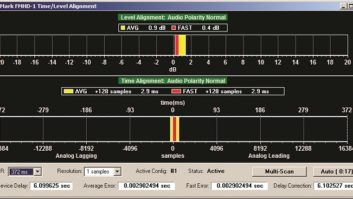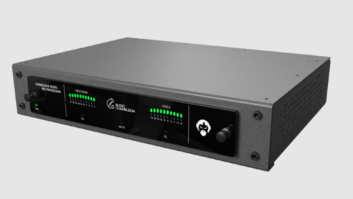I had an epiphany a few years back � a �Eureka moment,� if you will. I was reminded of it during the summer when I attended the 2015 EBU Network Technology Seminar. There was a discussion topic that arose more than once that really struck a chord with me:
Migration to IP is not simply about replacing a synchronous transport (be it T1 or SDI) with an RJ45; it�s about enabling performance (and workflow) improvements that are unachievable with synchronous transport.
�
Now I know that this seems an obvious thing to say (and not the greatest of epiphanies on the face of it), but at the time, it took me a while for that particular penny to drop and to really get my head around it.
�
The device, though, has to be custom built for IP � and that�s an important point. The performance and workflow gains aren�t fully achievable on devices that are built around TDM or other synchronous data buses. Sometimes you will see this when a manufacturer is on the IP migration path, and they�ll try to minimize the risk by �evolving� an existing design. Equally, you will see it in some multi-interface units (IP/ISDN/T1). They will generally take in the traffic from the IP interface and convert it to a synchronous data flow at the earliest opportunity. The problem is that you lose a lot of the value that IP brings in doing this. IP only really exists at the edges of the device with everything else retaining its synchronous feel � similar to bolting a T1-to-IP converter to the inside of the chassis. It�s an evolutionary tick-the-box exercise.
�
It�s like when you�re learning to speak a new language (French, German, Japanese, etc.), that period of time when you�re still thinking in English and your spoken word is simply a translation right at the very end.
�
And don�t get me wrong � APT did some �evolutionary� developments in the very early days of IP audio codec development to be early on the market and competing. Almost fifteen years on and our current generation of IP codecs are designed in IP from the ground up. This approach allows us to retain and treat packets as individual objects in their own right, each one made up of several layers of different information � all useful in different ways � and to be handled and protected individually.
�
It�s the difference between doing something and actually �getting it� � and now I know we really get it.
�
Once we made the jump to pure IP, we started to imagine things like multi-path streaming, more advanced forwarding for network protection and protection schemes, and all of a sudden, adding new capabilities gets easier and easier and you start to get the space to spend time on some of the really clever stuff.
�
There�s a concept we�ve developed, for example, called �distributed intelligence,� where the user can fully define how the unit works by means of an easy to use graphical scripting language.
�
Ever receive a new device and think that its options are good but are not just a perfect fit for how you want your network to work? Or perhaps there�s something that needs to be tailored or something that�s just not quite right. Well, with scripting, the behaviour of the unit can be completely customized to a particular situation, monitor its own performance and the performance of equipment around it and make intelligent decisions or actions based on the results. It can change its own configuration and the configuration of IP managed equipment around it, and that�s where some of the real power lies.
�
I�ve seen everything from N+1 to N+N to codecs that can automatically re-route their incoming streams (and every variation in between). In one of the standout examples (included here as Fig. 1 and Fig. 2), decoders can be made to work autonomously to ensure that they each have a stable stream to work with � the equivalent of running a peer-to-peer networking with the other decoders when one of the encoder feeds is unavailable.�
�
It makes you think that this IP thing may catch on, after all.�
�
Comments welcome below.

�
Ken Kearney is an engineer manager with APT (part of the WorldCast Systems group of companies). Opinions are his own, not necessarily those of his employer or Radio magazine.��












